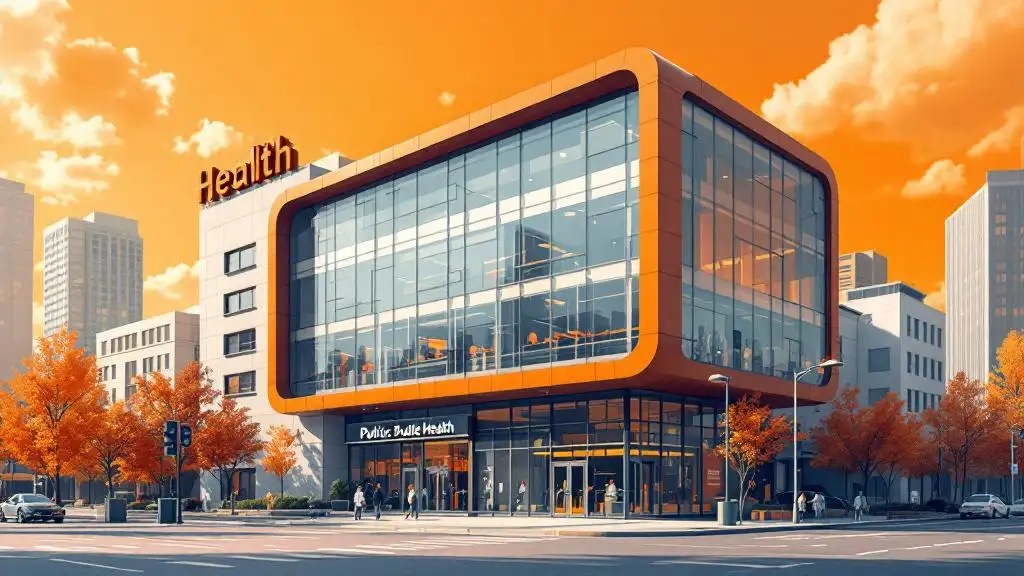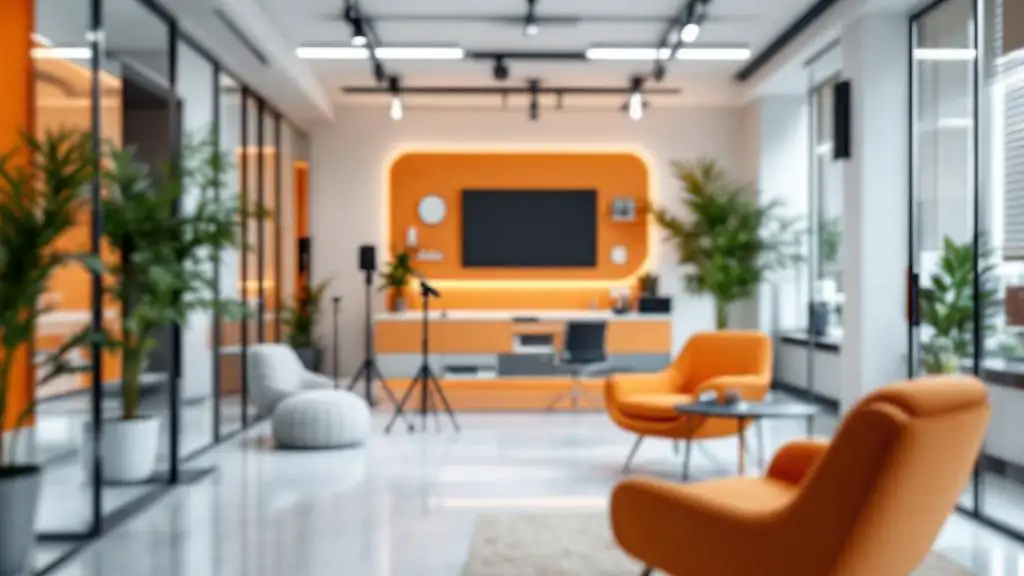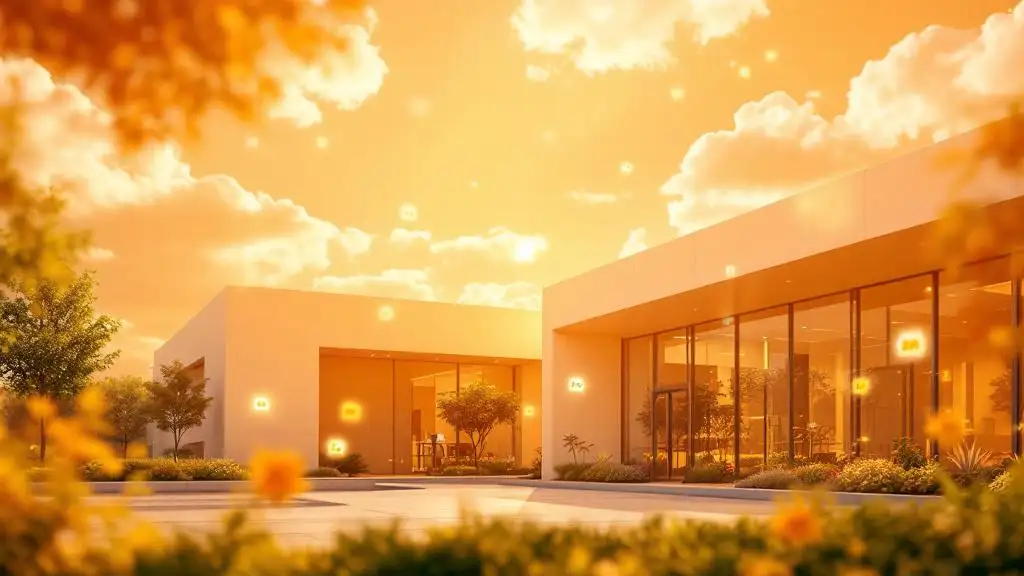Rehab Center Design Trends: Creating a Business Friendly Environment
Let's explore two key design trends in rehab centers: a motivating and welcoming environment, and the expansion to accommodate the aging population.


Rehab Center Design Trends: Creating a Business Friendly Environment
Design Trends in Rehab Centers
In the ever-evolving landscape of rehab centers, design plays a crucial role in creating an environment that is both business-friendly and conducive to patient recovery. Let's explore two key design trends in rehab centers: a motivating and welcoming environment, and the expansion to accommodate the aging population.
Motivating and Welcoming Environment
Rehabilitation facilities are designed to be motivating, welcoming, safe, and accessible, with a focus on promoting accomplishment and inspiration [1]. Creating an environment that instills a sense of positivity and encouragement can significantly impact a patient's mindset and overall well-being.
To achieve this, rehab centers incorporate elements such as bright colors, natural light, and open spaces. These design elements help create a welcoming atmosphere that uplifts the spirits of patients and their families. Comfortable seating areas, artwork, and calming nature-inspired accents further contribute to a positive ambiance.
In addition, incorporating spaces for group activities and socialization fosters a sense of community among patients. This encourages support, motivation, and camaraderie, which are essential elements of the rehabilitation process.
Expansion to Accommodate Aging Population
As the baby boomer generation ages, rehab centers are witnessing a need for expansion to accommodate this growing demographic [1]. This expansion includes the development of new freestanding facilities as well as expansion and renovation projects on acute care campuses.
The design of these expanded rehab centers takes into consideration the unique needs of older adults. This includes features such as wider hallways and doorways to accommodate mobility aids, handrails for stability, and accessible bathrooms. Creating a safe and functional environment ensures that patients can navigate the facility comfortably and without barriers.
Furthermore, rehab centers are incorporating specialized spaces to cater to the specific requirements of the aging population. These may include dedicated rehabilitation areas focused on balance and fall prevention, as well as therapy spaces designed for conditions such as joint replacement or stroke recovery.
By expanding rehab centers and tailoring the design to suit the needs of the aging population, these facilities can provide comprehensive care and support for individuals seeking rehabilitation services.
Designing rehab centers with a motivating and welcoming environment, as well as expanding to accommodate the aging population, are two prominent trends that contribute to creating business-friendly facilities. By embracing these design principles, rehab centers can provide an optimal environment for patients to heal, recover, and achieve their rehabilitation goals.

Patient-Centered Rehab Facilities
In modern rehab centers, the focus is on creating patient-centered environments that prioritize the well-being and comfort of individuals seeking rehabilitation. These facilities are designed to offer choices for patients and incorporate design elements that promote a sense of comfort and healing.
Choices for Patients
Rehab centers recognize the importance of providing patients with choices to meet their specific requirements and preferences. This includes allowing patients to personalize their spaces through options such as choosing lighting colors, controlling artwork, and selecting seating arrangements. By offering these choices, patients feel a sense of control and agency over their surroundings, which can positively impact their overall well-being and recovery process.
Design Elements for Comfort
Creating a comfortable environment is essential in rehab centers. These facilities aim to make patients and their families feel good about their rehab choice, as highlighted in Healthcare Design Magazine. Design elements that contribute to comfort include incorporating calming colors, ample natural light, and access to outdoor areas. The use of green and blue colors, in particular, has been found to reduce patient anxiety. These elements help create a soothing and therapeutic atmosphere for patients to focus on their recovery.
Privacy is also a key consideration in patient-centered rehab facilities. Individual therapy rooms provide patients with a private and intimate space for one-on-one sessions with their therapists. These rooms allow for personalized care and confidentiality, ensuring that patients feel comfortable discussing their challenges and progress.
Additionally, rehab centers recognize the importance of community integration, as mentioned in Source. Group activity areas and outdoor retreats are incorporated to encourage social interaction and engagement among patients. These communal spaces foster a sense of support and connection, promoting a positive healing environment.
By prioritizing patient choices and incorporating design elements that enhance comfort, rehab centers can create a business-friendly environment that supports the well-being and recovery of individuals seeking rehabilitation.

Modern Rehabilitation Facility Design
As the field of rehabilitation continues to evolve, the design of modern rehabilitation facilities has also undergone significant changes. The focus is now on creating a holistic approach that addresses both the physical and mental well-being of patients. This section will explore two important aspects of modern rehabilitation facility design: the holistic approach and the incorporation of versatile spaces.
Holistic Approach
Modern rehabilitation facilities are embracing a holistic approach in their design. This approach recognizes that rehabilitation is not solely about physical recovery but also encompasses mental and emotional well-being. The environment plays a crucial role in supporting the healing process and promoting overall wellness.
To create a holistic atmosphere, rehabilitation centers are incorporating biophilic design elements. These elements include natural lighting, the use of organic materials, green spaces, water features, and views of nature. These elements have been shown to reduce stress, improve mood, and enhance the overall well-being of patients [2]. By integrating nature into the design, rehabilitation centers can create a calming and healing environment that supports the overall rehabilitation process.
Versatile Spaces
Flexibility in layout and use is crucial in modern rehabilitation center design. Spaces need to be adaptable to meet diverse therapeutic needs, optimize resource use, provide personalized care, and support business agility [2]. Rehabilitation centers are now incorporating versatile spaces that can be easily modified to accommodate different activities and therapies.
These versatile spaces can be transformed to meet the specific needs of patients. For example, a room that is used for individual therapy sessions in the morning can be converted into a group activity area in the afternoon. This adaptability allows rehabilitation centers to optimize the use of their resources and provide a more personalized approach to patient care.
In addition to being flexible, these spaces are designed with patient comfort in mind. They are equipped with ergonomic furniture, calming colors, and appropriate lighting to create a comfortable and welcoming environment. By considering the needs and preferences of patients, rehabilitation centers can create spaces that enhance the overall rehabilitation experience.
In conclusion, modern rehabilitation facility design embraces a holistic approach and incorporates versatile spaces. By focusing on the physical, mental, and emotional well-being of patients, rehabilitation centers can create an environment that supports the healing process. The incorporation of versatile spaces allows for flexibility and personalized care, enhancing the overall rehabilitation experience for patients.
Integrating Technology in Rehab Centers
As the field of healthcare continues to evolve, rehab centers are embracing the integration of technology to enhance treatment outcomes and improve the overall patient experience. Cutting-edge technology is seamlessly integrated into the design of rehab centers, playing a vital role in the rehabilitation process.
Enhancing Treatment Outcomes
Technology integration in rehab centers has been shown to have a positive impact on treatment outcomes. By incorporating advanced technologies, such as personalized patient portals, virtual reality therapy, telehealth services, wearable health monitors, and smart room automation, rehab centers can provide more effective and personalized treatment plans for their patients [2].
Personalized patient portals allow patients to access their medical information, track their progress, and communicate with their healthcare providers. This technology promotes patient engagement and empowers individuals to take an active role in their recovery process.
Virtual reality therapy is another innovative technology that has gained traction in rehab centers. It provides immersive and interactive experiences that aid in physical and cognitive rehabilitation. Virtual reality therapy can simulate real-life scenarios, allowing patients to practice functional movements and improve their motor skills.
Telehealth services have become increasingly important, especially in situations where patients may have limited mobility or are unable to physically visit the rehab center. Through telehealth, patients can receive remote consultations, participate in virtual therapy sessions, and access ongoing support from healthcare professionals.
Wearable health monitors, such as fitness trackers and smartwatches, enable continuous monitoring of vital signs, activity levels, and sleep patterns. This data can be used to track progress, identify trends, and customize treatment plans accordingly.
Smart Room Automation
Smart room automation is a significant technological advancement in rehab center design. By integrating automation systems into patient rooms, rehab centers can provide a more comfortable and convenient environment for patients.
Smart room automation allows patients to control various aspects of their room, such as lighting, temperature, and entertainment systems, with the touch of a button or voice command. This level of control enhances the patient experience, providing a sense of independence and personalization during their stay.
In addition to patient benefits, smart room automation also streamlines operations for healthcare providers. Automated systems can monitor and regulate room conditions, optimizing energy usage and creating a more sustainable environment.
By integrating technology into rehab center design, treatment outcomes can be significantly enhanced, and the patient experience can be greatly improved. As technology continues to advance, it is essential for rehab centers to stay up to date with the latest trends and incorporate innovative solutions that benefit both patients and healthcare providers.
Sustainable Practices in Rehab Center Design
When it comes to designing rehab centers, incorporating sustainable practices is not only environmentally responsible but also contributes to creating a cost-effective and business-friendly environment. By utilizing eco-friendly materials and implementing energy-efficient systems, rehab centers can promote a healthier environment for patients and staff alike.
Eco-Friendly Materials
Choosing eco-friendly materials is an important aspect of sustainable rehab center design. These materials are sourced and manufactured with a reduced environmental impact, ensuring that the construction process aligns with sustainability goals. Examples of eco-friendly materials commonly used in rehab center design include:

By incorporating these eco-friendly materials into the construction and design of rehab centers, the overall environmental impact can be significantly reduced.
Energy Efficiency
Energy efficiency is another crucial aspect of sustainable rehab center design. By implementing energy-efficient systems and practices, rehab centers can reduce their energy consumption and lower operational costs. Key considerations for energy efficiency include:

By adopting these energy-efficient practices, rehab centers can not only reduce their carbon footprint but also benefit from long-term cost savings.
Incorporating sustainable practices in rehab center design, such as using eco-friendly materials and implementing energy-efficient systems, is essential for creating a business-friendly environment that aligns with environmental responsibilities. By reducing environmental impact and promoting energy efficiency, rehab centers can contribute to a healthier and more sustainable future.
Balancing Privacy and Community Spaces
In the design of rehabilitation centers, striking a balance between providing privacy and creating communal spaces is crucial. It is important to create an environment that respects the need for personal space while also fostering a sense of community and social interaction. Two key aspects that contribute to this balance are individual therapy rooms and outdoor retreats/community integration.
Individual Therapy Rooms
Individual therapy rooms are essential in rehab center design to ensure privacy and confidentiality during therapy sessions. These rooms provide a comfortable and secure environment for patients to engage in one-on-one therapy with their counselors or therapists. By offering a private space, patients can openly discuss their concerns and progress without feeling self-conscious or exposed.
The design of individual therapy rooms should prioritize creating a calm and soothing atmosphere. Consideration should be given to elements such as lighting, color schemes, and comfortable seating arrangements. Providing control and choice to patients in personalizing their therapy rooms can further enhance their sense of ownership and well-being [3].
Outdoor Retreats and Community Integration
Incorporating outdoor spaces and promoting community integration are vital components of rehab center design. Access to outdoor retreats allows patients to connect with nature and find peace and tranquility. These spaces can be designed to include gardens, walking paths, and seating areas, providing patients with a serene environment for reflection, relaxation, and therapeutic activities.
Community integration is also essential for rehab center design. Creating spaces where patients can engage in group activities, interact with fellow patients, and form supportive relationships can contribute to their overall well-being and recovery. These communal spaces can be designed to include shared living areas, group therapy rooms, or common dining areas.
When designing outdoor retreats and communal spaces, attention should be given to incorporating elements that reduce patient anxiety, such as natural light and calming colors [3]. These spaces should be inviting, comfortable, and conducive to fostering a sense of belonging and community.
By carefully balancing privacy and community spaces within rehab center design, patients can benefit from both the tranquility of personal space and the support and connection that come from engaging with others in a therapeutic environment. This approach creates a well-rounded and inclusive atmosphere that promotes healing and recovery.
References
[1]: https://healthcaredesignmagazine.com/trends/architecture/home-stretch-designing-rehab-centers/
[3]: https://bhbusiness.com/2024/03/25/the-design-trends-transforming-substance-use-disorder-treatment-facilities/







